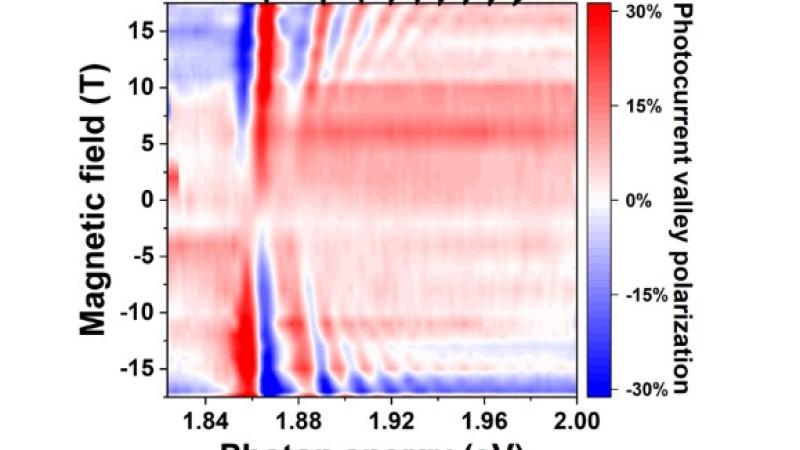September 30, 2020

In research recently published in Nano Letters, a team of engineers at Rensselaer Polytechnic Institute continued to push the boundaries of material physics and performance by developing a new spectroscopy technique that allows researchers to examine particle interactions that before could not be measured.
“This opens a new chapter of excitonics in 2D,” said Sufei Shi, an associate professor of chemical and biological engineering at Rensselaer, who led this work. “With our discovery, in principle, we can do all these Rydberg atom experiments on a chip, leading to new paradigm of quantum simulation.”
Shi and his team have spent much of their research on the exciton, a promising quasiparticle that is formed when a positively charged particle bonds with a negatively charged particle. Their discoveries about this particle and how to manipulate it for optimal performance play an important role in unlocking the potential of monolayer transition metal dichalcogenides, which are atomically thin semiconductors, to enable future quantum computing and data storage.
In this work, the team was focused on an excited exciton, with a high-order excited state, known as a Rydberg exciton. Using photocurrent spectroscopy, the researchers were able to identify these excited states beyond what had previously been observed, an understanding that lays the groundwork for promising quantum simulation.
“This gives us tremendous opportunities to play with the excited-state of exciton instead of just the exciton itself. These excited-state excitons are larger in size and have much stronger interactions with each other,” Shi said. “Therefore, they can be tuned with an electrical field and also lead to nonlinear excitonic physics. These nonlinearities can be exploited for quantum simulation and sensing.”
Joining Shi in this work, were Tianmeng Wang, a graduate student at Rensselaer, and Zhipeng Li, a postdoctoral researcher. Shengnan Miao and Zhen Lian, both graduate students at Rensselaer, also contributed.